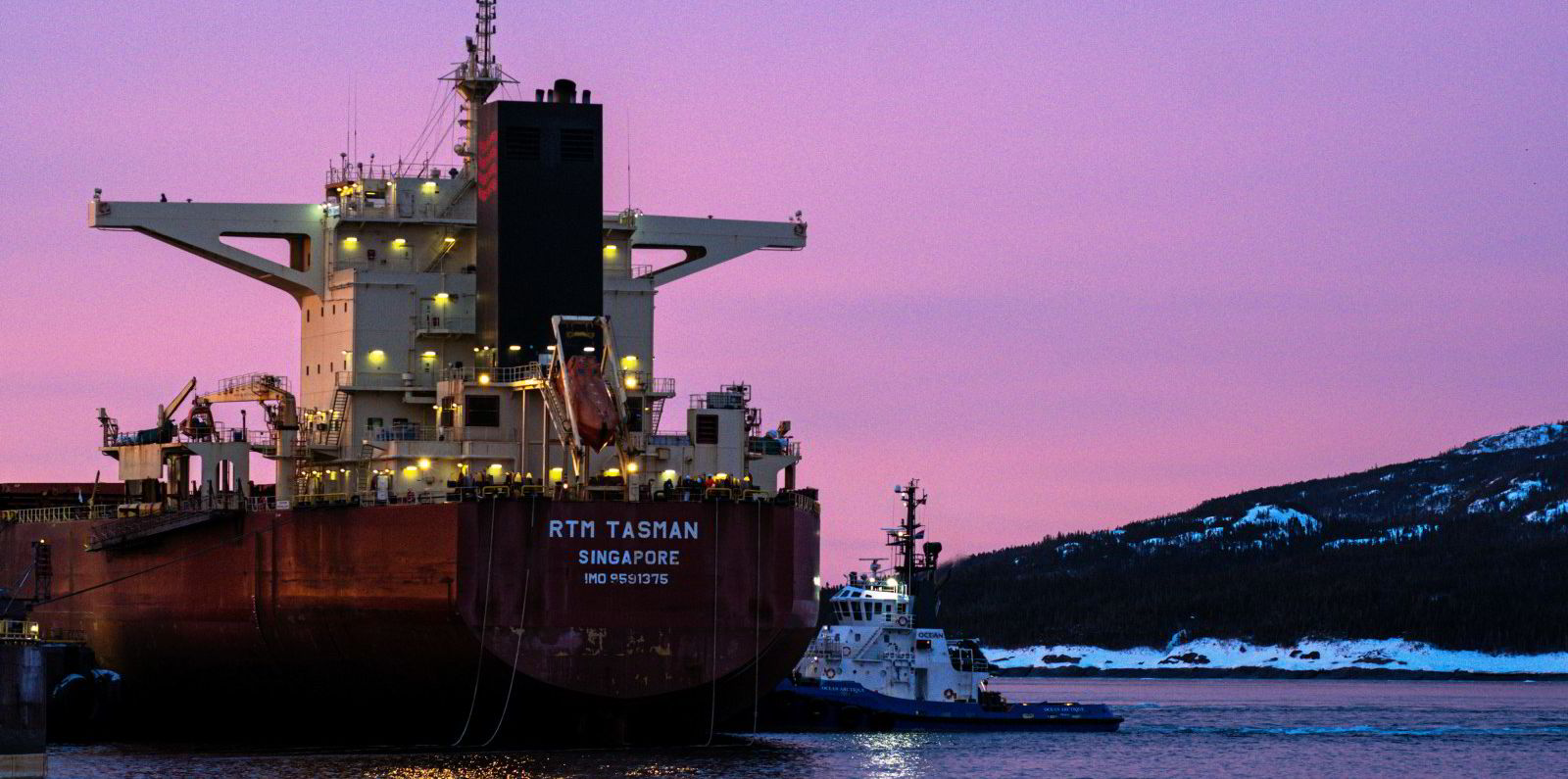Who is most in danger of paying too much for a bulk carrier in today’s market?
Buyers of sub-capesize vessels, that’s who — unless there is a radical turnaround in current freight markets, brokers and analysts say.
During the first quarter, capesize rates have been 250% above the five-year average, while panamax rates are only 10% above.
Average supramax and handysize rates have been slightly below the five-year rolling average during this time, according to a report by Maritime Strategies International.
But even though markets have been different for bulkers big and small during 2024 so far, strength still seems to be filtering down into asset prices.
Shipbroking group Fearnleys hailed “a new price benchmark” for mid-age supramaxes when San-E Maritime of Japan reportedly sold its 55,500-dwt supramax Queen Busan (built 2010) for $17.15m this week, as TradeWinds has reported.
Alexandra Alatari, senior shipping analyst at Braemar, said that rising asset prices had caught many by surprise in recent months, especially for capesizes.
“Modern tonnage values have gained the most as there is a distinct lack of quality sales candidates and great buying interest across all segments, especially as yards’ forward cover extends well into 2026-27,” she told TradeWinds.
“A stricter upcoming regulatory environment also increases the appeal of eco and efficient designs.”
But Alatari sees two different stories emerging: one for capesizes and another for smaller bulkers. Price hikes are justified for one group, but not for the other.
“Freight market performance and improved sentiment can justify the recent [capesize] price hikes,” she told TradeWinds.
The capesize spot market has had its strongest start to the year since 2010. Values for capesizes of all ages have already surpassed their Covid-era highs, she said.

“The period market is also trading close to previous cycle highs, while expectations are that, despite any volatility, supply-demand dynamics in the capesize segment will remain structurally tight in the coming years thanks to multi-year low deliveries,” Alatari explained.
As might be expected, strength in the capesize market is filtering down to the smaller sizes — especially kamsarmaxes, she added.
But differing fundamentals for sub-capesize bulkers means that asset prices could be at risk of becoming overinflated.
“While rates for kamsars, ultras and handys look healthy, especially for this time of the year, freight market performance alone cannot justify why asset values in these segments approach or have already exceeded previous cycle highs while period or spot rates significantly lag behind levels seen in 2021 to 2022 or 2010,” Alatari said.
This is where it is helpful to look across at other vessel types and see how dry bulk compares, she said. Bulkers may be the last realistic asset play standing for speculative buyers — and this could be what is supporting asset prices.
Questions over asset prices have come to the fore during what has been the first week of sustained declines in spot rates for capesize bulkers since before the Lunar New Year holidays — but the weakness is largely not being felt by smaller vessels, aside from panamaxes.
Average capesize rates have declined by over 12% since Monday, with Baltic Exchange panellists making successively lower assessments each day.
On Thursday, the Baltic Capesize Index was assessed at $29,752 per day, the first time it has slipped below the $30,000 level since February.
The disconnect between capesizes and the rest of the market is plain to see. Average sub-capesize spot rates have been following an upward trend and are at some of the highest levels seen in months.
Average panamax spot rates this week hit the highest level since December, assessed at $20,757 per day on Tuesday, but have since slipped to $19,834 per day as of Thursday.
Meanwhile, average supramax spot rates hit a three-month high on Thursday at $15,167 per day.
Handysize rates are also at the highest levels seen since 2024 began, with average rates assessed at $14,302 per day on Thursday.
“The secondhand dry bulk market offers a more attractive entry point at the moment,” Alatari said.
This is “given that the container ship market has not felt the full impact of increased deliveries yet; a tighter sanctions regime leads to a wait-and-see approach in the tanker market, other sectors (such as gas or offshore) remain illiquid, delivery positions for new orders are pushed further out and owners appear to be cash rich”.
Oslo-based Cleaves Shipbrokers cautioned would-be vessel buyers about too-high prices this week.
“Watch the freight market!” warned brokers from its sale-and-purchase and projects desk in a report on Monday.
The shop predicts an “adjustment” to the price/earnings ratio, particularly for sub-capesize bulkers.
“It is traditional wisdom that the first quarter is always the weakest period of the year in dry cargo, and should this be the case also this year, we are certainly in for a very good year,” the shop said.
Further advances in freight rates are needed if asset prices are to continue to rise, it added.
“Last time we saw prices at this level — actually the only one time since 2010 that secondhand prices have been at today’s level, namely in the spring of 2022 — the freight market was nearly 50% higher than it is today,” the shop said in the report.
“So, either there is more to be had on the earnings side here (which seasonality may suggest), or we may see prices levelling off — in any case, we predict an adjustment to the price/earnings ratio from here.”
The 83,000-dwt, Sanoyas-built kamsarmax Key Guardian (built 2011) had as many as 20 prospective buyers, Cleaves said.
The $23.7m sales price is $5.7m more than the last-done deal for a comparable vessel sold in January.
Cleaves said it is seeing a growing number of sales candidates being lured onto the market by the attractive prices achieved in recent deals.




